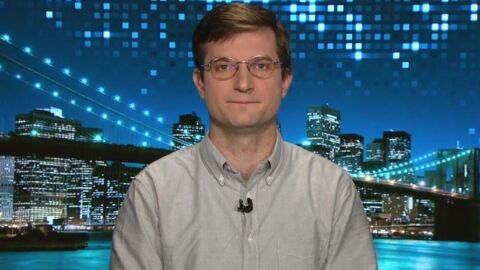Read Transcript EXPAND
CHRISTIANE AMANPOUR: How do you discover this? What made you probe this, you know, use of technology to almost redesign their surveillance state?
PAUL MOZUR, TECHNOLOGY REPORTER, THE NEW YORK TIMES: Yes. I mean, so it’s something that’s been going on in China more broadly for quite a few years now. If you left China maybe five or six years ago and came back today, probably the most sort of obvious change in the landscape, the urban landscape, are just this sort of — you know, sort of towers of cameras that have been assembled on, a lot of intersections, different places. So, that investigation led us, obviously, to Xinjiang but it also led us to look more broadly within China about what they’re doing with this footage.
And what we discovered is that they’re starting to run computer vision and facial recognition algorithms that are marking people based on their race, based on whether they might have a history of mental illness, based on a past history of drug use, based on their discontent with the government. And once you sort of — what happens is on a local level, you have small lists of people’s faces being assembled by local police and then they can program the cameras to try to send an alarm if somebody of that type walks by, and then the police know where they are or maybe the police can respond and get them away from a certain area that they don’t want them to be.
So, it’s pretty stark in that respect. You know, and then that led us to Xinjiang, where you see the entire — you know, the entire world of the place reworked by technology with the help of technology, you know, in terms of the cameras but also the checkpoints, you know, the biometric collection of data, you know, DNA samples, face scans, iris scans, voice samples, all these ways that they’re just trying to kind of, you know, get a more high-tech ability to know what every single person in this region is doing at all times.
AMANPOUR: So, Xinjiang is where the Uyghurs’ essential homeland is. I mean, they’re a minority but remember, we’re in China and apparently, that minority adds up to 11 million people. I mean, they can’t detain and put into reeducation camps 11 million people. What is their aim with this technology and with the detention camps?
MOZUR: Right. So, nobody is going to come out and say, you know, for years, they denied the existence of these camps and now they’re saying, well, they’re just vocational training centers. So, we have to kind of guess at the goals. But certainly, you know, any kind of analysis would show that basically they are trying to fundamentally alter Uyghur culture and, in some ways, just stamp it out entirely and make this minority a lot more like all the rest of the Chinese everywhere else.
And so, you know, you see specific targeting of Islam and, you know, expressions of religion. You see Any kind of Uyghur culture has to be mediated in a very specific state-approved way. And so, at the heart of it, these camps are about cultural transformation, about changing a minority in this just, you know, profound way. And you know, whether they’ll be successful or not is sort of hard to say. But certainly, even with just a million people in camps, that’s a powerful enough deterrent that people are terrified in the way they live their day- to-day lives.
About This Episode EXPAND
Christiane Amanpour speaks with Paul Mozur about how China is using tech against its own people; and Jared Diamond about his latest book “Upheaval.” Michel Martin speaks with Maddie Corman about her unique one-woman play “Accidentally Brave.”
LEARN MORE


